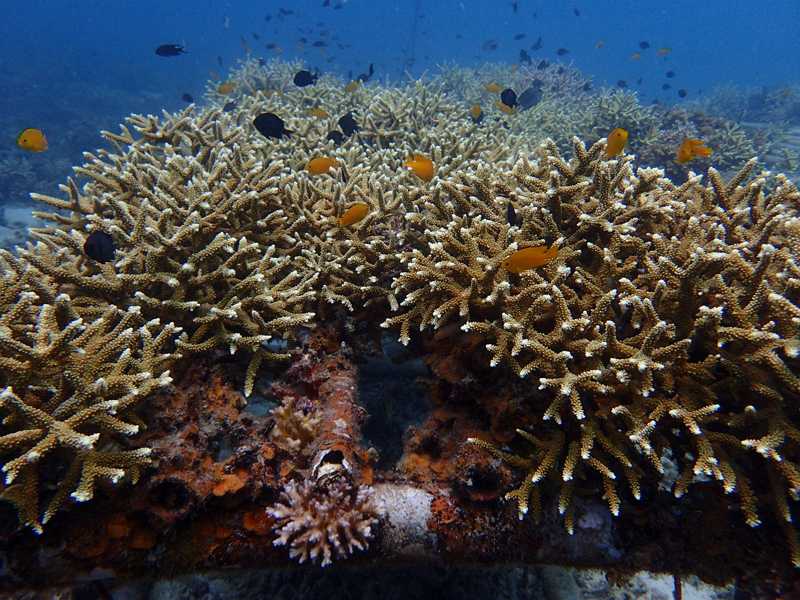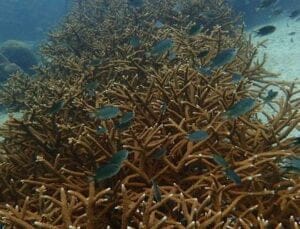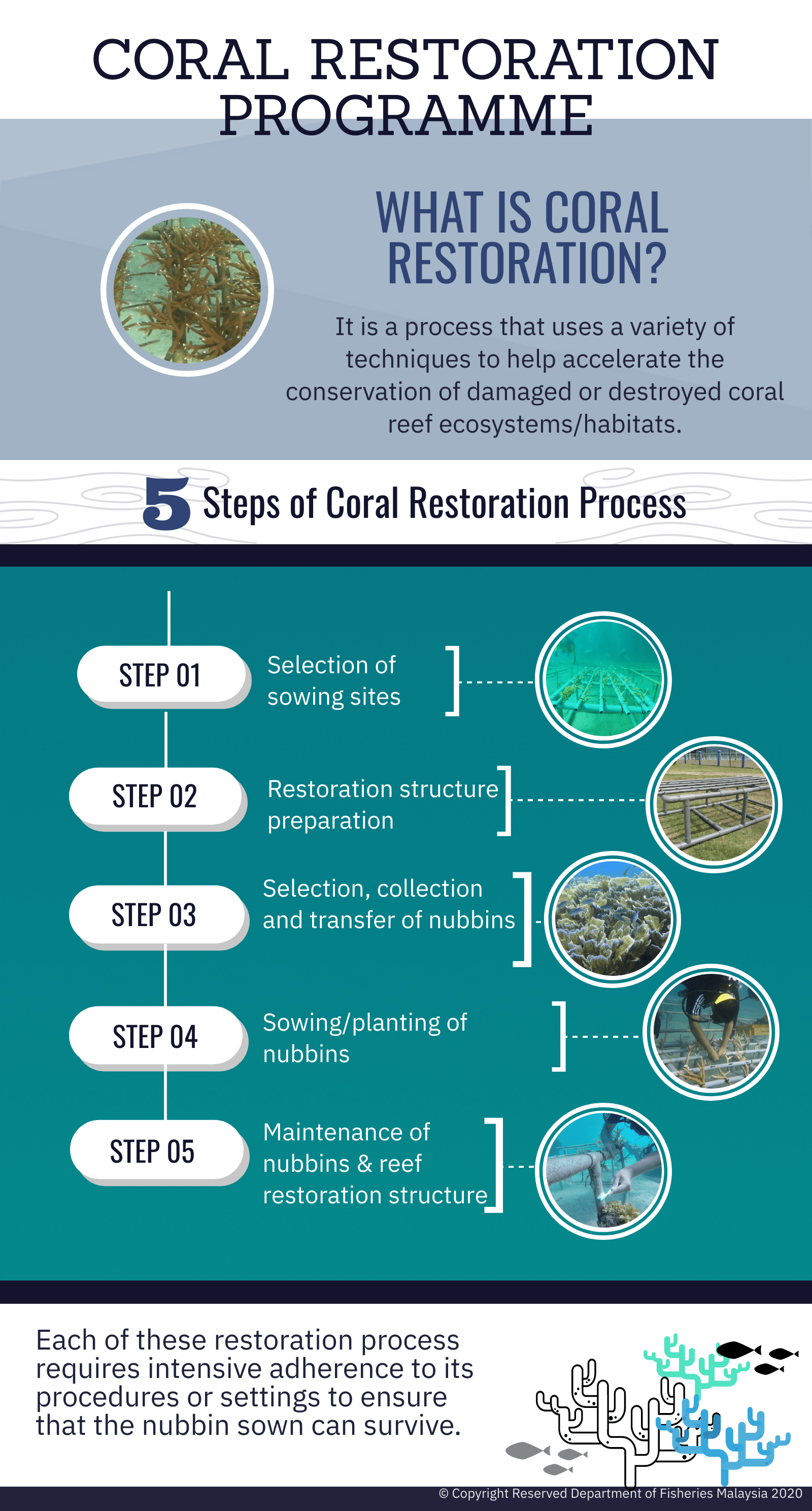
Coral restoration is a process that uses a variety of techniques to help accelerate the conservation of damaged or destroyed coral reef ecosystems or habitats. The Department of Fisheries Malaysia has taken the initiative to implement the Coral Restoration Programme to address the problem of loss and degradation of the marine habitat, especially in Marine Parks. It should be noted, however, that coral restoration programmes are not the only solution for conservation of damaged habitats. Identification and resolution of local threats should be given priority before a coral restoration programme can be implemented in a coral reef area to ensure the effectiveness and success of these programmes.
The successful Coral Restoration Programme is also expected to be able to re-enhance the aesthetic value of the area to attract tourists and ensure the sustainability of fishery resource. This programme was formally launced by the National Biodiversity Council chaired by the Most Honorable Deputy Prime Minister and members comprising of the Menteri Besar and Chief Minister from each state, during the first meeting on 22 October 2013.
Once an area is identified as suitable for the implementation of a coral restoration programme where local threat factors (pollution, intrusion of prohibited fishing activities, controlled tourism activities, planned development etc.) have been identified and completed, the coral restoration process will begin. This process needs to go through five main work steps, namely:
- Selection of sowing site based on the following features:
- Protected from the rough waves and strong currents.
- Nearby natural coral reef habitat.
- Outside of cruise and recreational activities.
- Sandy and non-slip/muddy seabed.
- Air depth 5-10m.
- Clear waters.
- Easily accessible for monitoring.
- Preparation of the restoration structure:
- restoration stucture design is made based on live coral requirements features.
- The structure and construction of the restoration should consist of materials that do not pollute the marine environment such as iron, marine concrete, PVC, rope, glass and others.
- The suitability of the design and building materials of the restoration structure depends on the physical and biological conditions of the sowing site.
- Selection, collection and transfer of nubbins:
- The coral nubbin used should have a good level of health.
- At this point, the selected live coral is a fragment of hard coral that has been broken and not taken from the healthy group of ‘coral of opportunity’.
- Most of the hard corals used in the Marine Park restoration project that began in 2011 have been taken from the Acropora species because they have a wide distribution and have a fast growth rate compared to other hard coral species.
- All transfer work should be carried out in seawater and coral nubbins should neither be removed from seawater nor exposed to air.
- Sowing/planting the nubbins:
- This process is done by tying the coral nubbins to the structure using cable ties.
- To facilitate the work of tying the coral nubbins, the cable ties that have not been fully pulled are pre-installed on the structure.
- Once the nubbins are attached to the structure, the cable ties will be pulled as thight as possible to prevent the movement of the nubbins when exposed to water currents or waves.
- Nubbin and coral restoration structure maintenance:
- Monitoring and maintenance activities are done to ensure and determine the success of a programme.
- Monitoring and measurement of the life rate and growth of coral nubbins is done in accordance to the guidelines established for the Monitoring and Evaluation System of Coral Rehabilitation Projects that have been developed by the Marine Park and Resource Management Division.
Appropriate time periods should be adhered to sow and move corals to their original habitat for the purpose of declining habitat/degradation programme. This is because in the early stages (first quarter) and mid (second quarter), the planted or placed coral nubbins will undergo a process of acclimatisation. It also needs to go through a period of recovery from the stress resulted from damage and destruction of part of the skin tissue when it is collected, transferred and tied to the shelf structure at the sowing site.
For a period of one to three months, the coral nubbins will go through a stage of adapting to local surroundings. The recommended nursery period is between 9 to 12 months. This period of time is to allow the coral nubbins to reach a level of stability in its growth before it is transferred to its original habitat for habitat growth and restoration.





